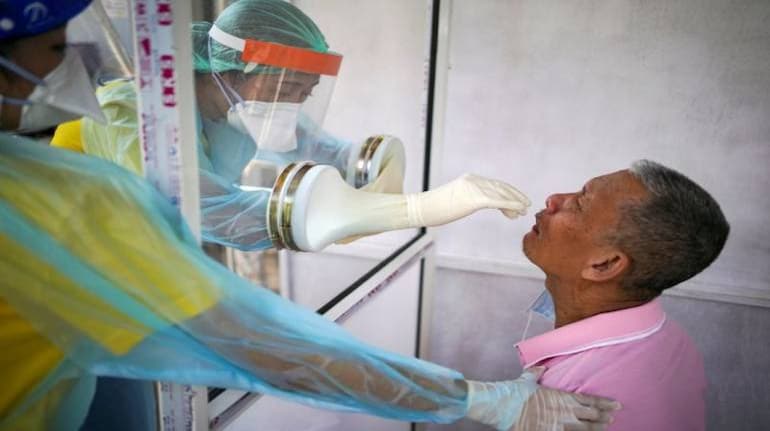



The recently-detected Omicron variant of coronavirus is thrice as contagious as the Delta variant, the Centre informed the state governments on December 21, as it instructed them to take proactive measures to contain its spread.
The Centre has asked the state and district authorities to consider imposing containment measures in areas where a surge in positivity rate is reported.
"Omicron is at least three times more transmissible than Delta. Hence, even greater foresight, data analysis, dynamic decision making and strict and prompt containment action are required at the local and district level," news agency ANI quoted Union Health Secretary Rajesh Bhushan as saying in his letter to the state governments.
"The decision making at the State/UT and district level must be very prompt and focused and take containment measures and restrictions even before these thresholds are reached," Bhushan added.
The health secretary stressed that there should be constant review at the district level of the population infected by COVID-19, the geographical spread of the latest identified cluster, the prevalent hospital infrastructure and its utilization.
"Kindly activate the war rooms/EOCs (emergency operation centres) and keep analyzing all trends and surges, no matter how small and keep taking proactive action at the district/local level. Regular reviews with field officers and proactive action in this regard will definitely control the spread of infection and flatten the curve," Bhushan said.
In case of all new clusters of COVID-19 positive cases, prompt notification of ''containment zones'' and ''buffer zones'' should be done, and strict perimeter control of containment zone according to extant guidelines must be ensured, the letter underlined, further stating that all cluster samples must be sent to INSACOG Labs for genome sequencing without delay.
Bhushan also noted that test positivity of 10 percent or more in the last one week or bed occupancy of 40 percent or more on oxygen supported or ICU beds should be main elements of the framework to be used by states and Union territories to facilitate decision making at the district level.
Also Read | Will Omicron trigger another global economic downturn?
The assessment of Omicron being more contagious than Delta raises concern as the latter is considered to have triggered the devastating second wave of the pandemic in India, between April and June this year.
On December 11, World Health Organisation (WHO) chief Dr Tedros Adhanom Ghebreyesus also noted that there is considerable evidence which suggests Omicron is "spreading significantly faster" than the Delta variant.
"And it is more likely people vaccinated or recovered from COVID-19 could be infected or re-infected," Ghabreyesus said.
The WHO's statement echoed the finding of a recent study conducted by Imperial College London, which suggested that the risk of reinfection due to Omicron was five times higher. It further said that the variant has shown no sign of being milder than Delta.
The Indian health ministry had last week advised citizens to avoid unnecessary travel, abstain from mass gatherings and observe low-intensity festivities around the New Year period.
The country's tally of Omicron infections surged past 200 on December 21, with cases now being detected across 12 states. Maharashtra has reported the highest number of Omicron infections, 11, followed by 54 in Delhi.
(With PTI inputs)Discover the latest Business News, Sensex, and Nifty updates. Obtain Personal Finance insights, tax queries, and expert opinions on Moneycontrol or download the Moneycontrol App to stay updated!
Find the best of Al News in one place, specially curated for you every weekend.
Stay on top of the latest tech trends and biggest startup news.